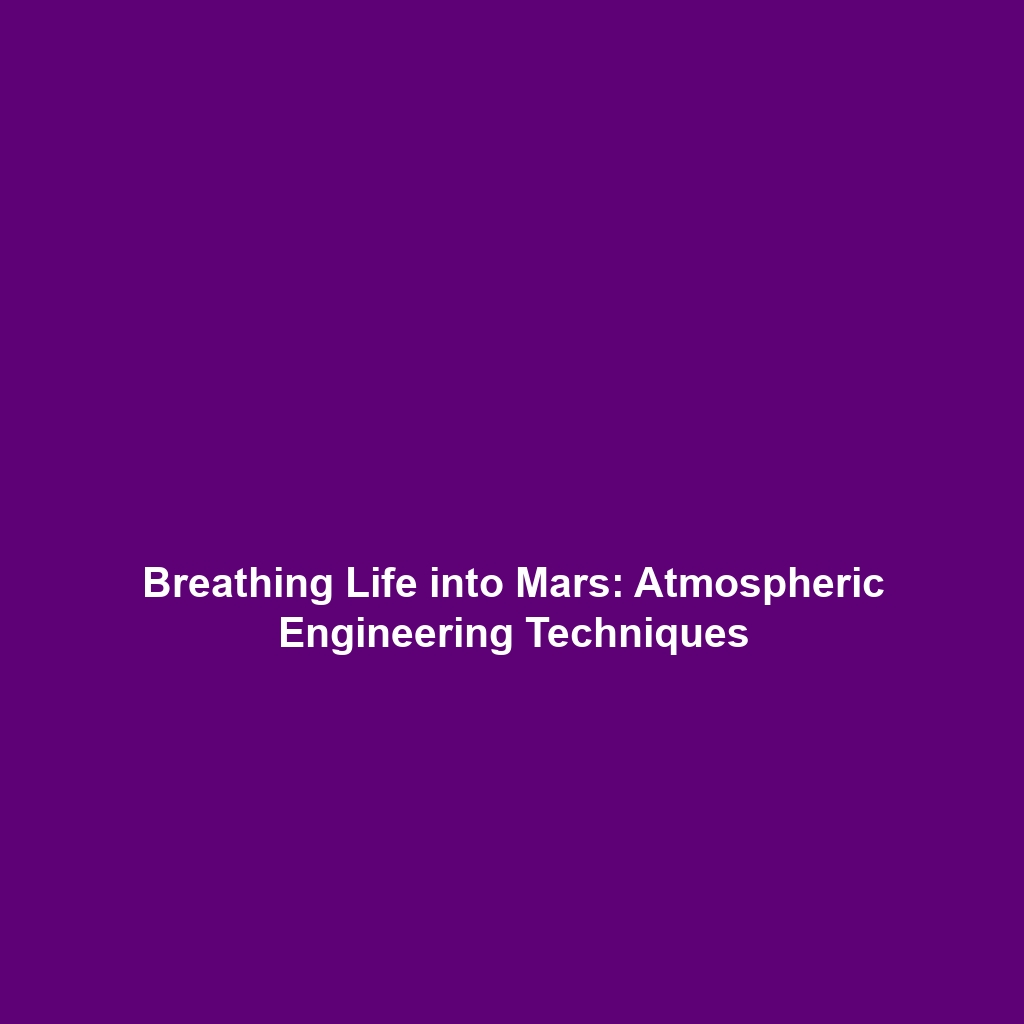Heating Mars: Using Greenhouse Gases or Orbital Mirrors to Warm the Planet
Introduction
The possibility of colonizing Mars hinges on transforming its current frigid climate into a more hospitable environment. Heating Mars through innovative solutions such as greenhouse gases and orbital mirrors presents a promising avenue for making this feasible. As research deepens, the significance of warming Mars extends beyond human habitation; it also encompasses ecological considerations and planetary sustainability. Exploring these methods of heating is pivotal not only to the success of colonization but also to the broader scope of space exploration.
Key Concepts
Greenhouse Gases and Their Function
Greenhouse gases such as carbon dioxide and methane play critical roles in trapping heat. By artificially increasing their presence in Mars’ atmosphere, scientists aim to enhance the greenhouse effect, raising global temperatures significantly.
Orbital Mirrors
Orbital mirrors are another innovative concept. These large reflectors would be placed in orbit around Mars, directing sunlight toward the planet’s surface. This strategy could potentially melt polar ice caps and activate greenhouse gas releases from Martian soil.
Applications and Real-World Uses
The applications of heating Mars extend beyond theoretical models; they propose viable pathways to colonizing Mars. Here are some significant applications:
- Terraforming: By actively warming Mars, we could cultivate a more Earth-like atmosphere.
- Agricultural Development: Warmer conditions may allow for the growth of food crops in controlled environments.
- Water Sourcing: Melting ice caps could provide water necessary for sustaining future Martian colonies.
Current Challenges
Despite the potential benefits, there are several challenges of heating Mars:
- Technological Feasibility: Developing efficient technologies for both greenhouse gas production and orbital mirror deployment is necessary.
- Environmental Impact: Ensuring that the warming processes do not lead to unforeseen ecological damages.
- Cost and Investment: Significant financial resources will be required for research, development, and implementation.
Future Research and Innovations
Future research into heating Mars focuses on next-gen technologies that enhance the effectiveness of these heating methods. For instance:
- Advanced Materials: Research into materials that can withstand the harsh conditions while effectively reflecting sunlight.
- Genetic Engineering: Engineering plants that can thrive in Martian soil could link heating efforts with agricultural solutions.
- Space-Based Technologies: Developing drones and satellites for real-time monitoring of temperature and atmospheric conditions on Mars.
Conclusion
In summary, heating Mars through methods like greenhouse gases and orbital mirrors is crucial for the future of colonizing Mars. While challenges abound, ongoing research promises innovative solutions that could enable humanity to inhabit the red planet. For those interested in the intricacies of planetary transformation and colonization, further reading on related topics offers deep insights into the science and technological advances needed for making Mars a second home.


